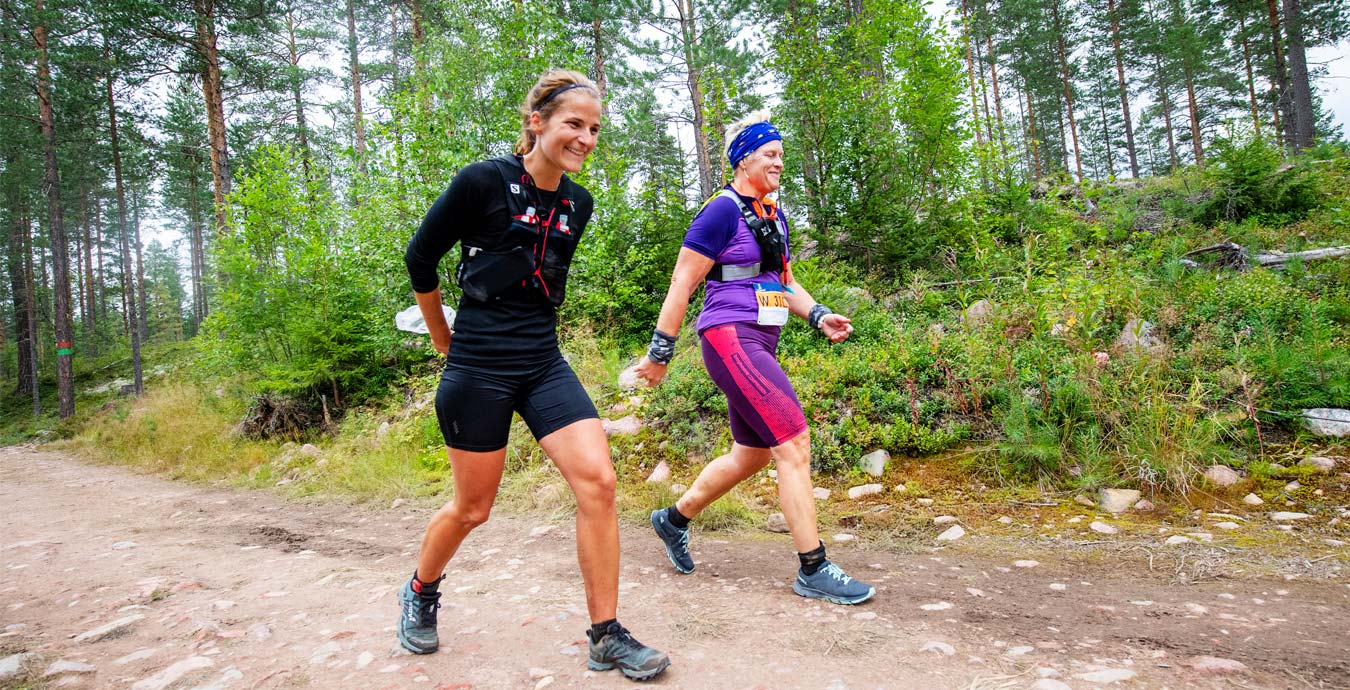The forest makes you a better runner
No matter if you're a more experienced cyclist or just getting started, and regardless of the goal you're setting for your race, previous Cykelvasan 90 winner Emil Lindgren has the tips to get you there!
Trail running means that the surface is soft. It’s gentle on the body, while the uneven ground challenges your strength. Your feet work harder to find stability, your body’s muscles work harder to support your posture and you need to lift your legs and feet more so as not to trip.
Running in the woods activates more muscle groups and your heart rate automatically increases. This provides good fitness training without increasing the strain on your body.
Variations in the terrain also make running more playful and it challenges the body’s ability to react. In short, it’s fun to run in the woods! But trail running also has other positive attributes; it provides a good break from stressful everyday life, it allows you to enjoy the peace and quiet, and you get the benefits of breathing fresh air.
Three keys to success
- Dare to vary your training, both in terms of type and intensity.
- Dare to step out of your comfort zone and train more in the woods.
- Dare to get a bit playful and childish; you will be amazed at how fun training can be.
Workouts in the woods – some examples
For better endurance
Go for a longer workout in the woods with low intensity. The purpose is to make your body accustomed to long-term work. The session can run on smaller paths or off-trail; this should suit runners of all experience levels. Variation in nature means that your heart rate will naturally go up and down, but the focus should be on being out for a long time without getting very tired from the intensity (don’t wear yourself out, in other words). If you’re not yet able to keep running for a long time with low intensity, bring poles and do some Nordic walking for a longer distance out in the terrain.
For better fitness
Here are three examples of how you can improve your fitness. You can switch between them to vary things up and make training more fun. Suitable for beginners as well as advanced runners.
- Complete some off-trail interval training, with or without poles. Run 4–6 intervals of, for example, 4 minutes with 90-second breaks. After this, you can run a few shorter intervals to get a bit more speed, for example 4 intervals of 30 seconds with 30 seconds of rest. If you don’t have the training for it, walking fast may do nicely.
- Train in intervals with poles at a long slope, for example a slalom ski slope. Push hard when going up and rest on the way down, vary the length of your intervals and switch between pole walking and pole running. One suggestion is to start with two slightly longer walking intervals, for example 6 minutes, followed by two intervals of 3 minutes walking or running. Then four intervals of, for example, 1 minute of pole running each. The intensity increases as the intervals become shorter. Rest on the way down.
- A playful but tough workout is to train with natural intervals in, for example, a hilly floodlit trail. For 30–45 minutes you push quite hard on the slopes and go a little slower between slopes. During a session like this, poles are perfect, whether you’re walking or running. The workout challenges your fitness, but it also gets your body used to carrying a tougher load for a long period of time.
The text is an adaptation of Håkon Breistrand’s article in Vasalöparen no. 3, 2019.
Upcoming events in the Vasaloppet Arena 2022–2023
Vasaloppet’s Summer Week 2022 (registration open)
• Friday, August 12 Cykelvasan Öppet Spår 94 km, start Sälen
• Saturday, August 13 Cykelvasan 90 94 km, start Sälen
• Sunday, August 14 Cykelvasan 45 45 km, start Oxberg
• Sunday, August 14 Cykelvasan 30 32 km, start Oxberg
• Sunday, August 14 Ungdomscykelvasan 32 km, start Oxberg
• Friday, August 19 Trailvasan 10 10 km, start Mora
• Saturday, August 20 Ultravasan 90 90 km, start Sälen
• Saturday, August 20 Ultravasan 45 45 km, start Oxberg
• Saturday, August 20 Trailvasan 30 30 km, start Oxberg
• Saturday, August 20 Vasastafetten 90 km, running relay for ten-person teams, start Sälen
• Saturday, August 20 Vasakvartetten 90 km, running relay for four-person teams, start Sälen
Vasaloppet’s Winter Week 2023 (registration open)
• Friday, February 24 Vasaloppet 30 30 km, start Oxberg
• Saturday, February 25 Tjejvasan 30 km, start Oxberg
• Sunday, February 26 Ungdomsvasan 9 km start Eldris, 19 km start Hökberg
• Sunday, February 26 Öppet Spår Sunday 90 km, start Sälen
• Monday, February 27 Öppet Spår Monday 90 km, freestyle, start Sälen
• Tuesday, Februray 28 Vasaloppet 45 45 km, start Oxberg
• Friday, March 3 Stafettvasan 90 km, five-person teams, start Sälen
• Friday, March 3 Nattvasan 90 90 km, individually or two-person teams, freestyle, start Sälen
• Friday, March 3 Nattvasan 45 45 km, individually or two-person teams, freestyle, start Sälen
• Friday, March 3 Nattvasan 30 30 km, individually or two-person teams, freestyle, start Sälen
• Saturday, March 4 Vasaloppet 10 9,2 km, freestyle, start Eldris
• Sunday, March 5 Vasaloppet 90 km, start Sälen



